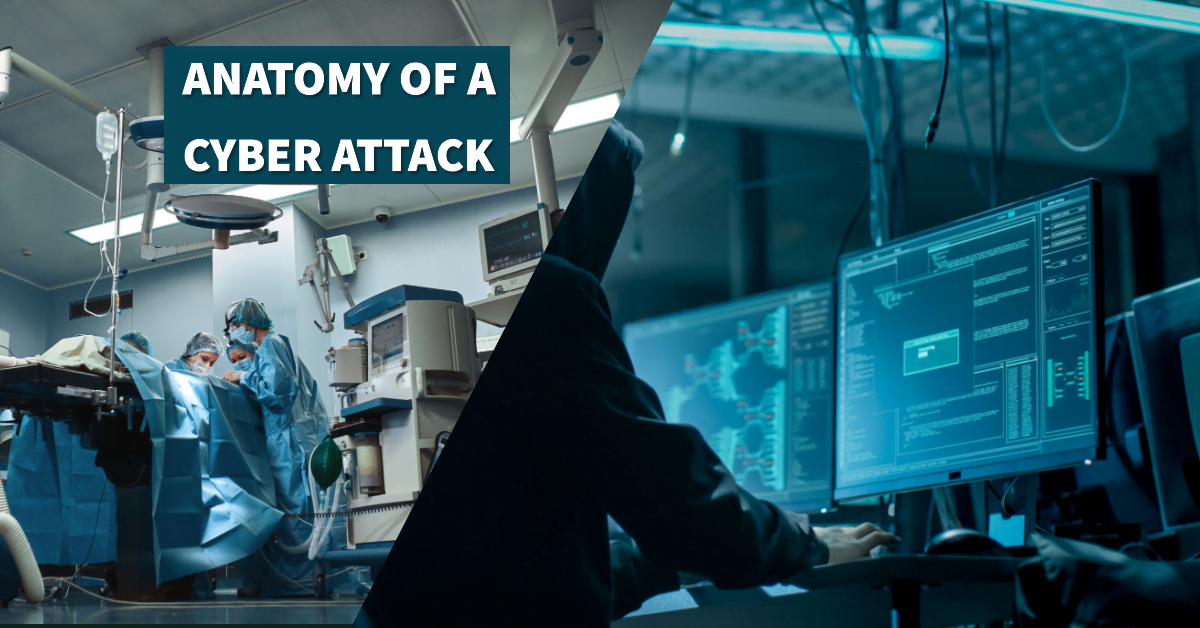
The Anatomy of a Cyber Attack: Case Studies and Lessons Learned
Understanding the anatomy of a cyber attack is crucial for organisations seeking to protect themselves from potential threats. By analysing real-world cases, we can gain valuable insights into the methods and tactics used by cybercriminals and learn how to better defend against them. We will examine three notable cyber attacks, exploring their impact, the techniques used, and the lessons learned. We will also discuss recent breakthroughs in the field of cybersecurity, supported by expert insights and references.
1. Case Study: WannaCry Ransomware Attack
The WannaCry ransomware attack, which took place in May 2017, is considered one of the most devastating and widespread cyber attacks in history. The attack affected over 200,000 computers across 150 countries, with victims including major organisations such as the UK’s National Health Service (NHS), FedEx, and Telefonica.
Impact and Response
The attack caused widespread disruption, particularly within the NHS, where patient records were encrypted and inaccessible, and numerous medical appointments and surgeries were postponed. The total financial cost of the WannaCry attack is estimated to be over $4 billion.
Fortunately, a researcher known as MalwareTech discovered a “kill switch” that inadvertently halted the spread of the ransomware. Nevertheless, the attack served as a stark reminder of the potential scale and impact of cyber attacks.
Techniques Used
WannaCry was a ransomware worm that exploited a vulnerability in the Windows operating system known as EternalBlue. This vulnerability, which had been discovered and developed by the US National Security Agency (NSA), was leaked online by a group called the Shadow Brokers. WannaCry encrypted victims’ data and demanded a ransom payment in Bitcoin to unlock the files.
Lessons Learned
- Software updates are essential: Microsoft had released a patch for the EternalBlue vulnerability before the WannaCry attack. However, many organisations had not applied the patch, leaving their systems vulnerable. Regularly updating software is critical to protect against known vulnerabilities.
- Back up your data: Regularly backing up data can help mitigate the impact of a ransomware attack, as organisations can restore their systems without paying the ransom.
- Collaboration is key: The rapid response to the WannaCry attack was facilitated by collaboration between cybersecurity researchers, law enforcement agencies, and private sector organisations. Sharing information and working together can help to identify and mitigate threats more effectively.
2. Case Study: SolarWinds Cyber Attack
The SolarWinds cyber attack, which came to light in December 2020, was a sophisticated and far-reaching supply chain attack targeting the US government and private sector organisations. The attackers compromised the software update process for SolarWinds’ Orion platform, allowing them to infiltrate the networks of thousands of organisations, including US government agencies and Fortune 500 companies.
Impact and Response
The full extent of the damage caused by the SolarWinds attack is still being assessed, but it is considered one of the most significant cybersecurity breaches in history. The attackers gained unprecedented access to sensitive information, including emails, internal documents, and intellectual property. In response, the US government and the cybersecurity community launched a massive effort to identify the extent of the breach and secure compromised systems.
Techniques Used
The attackers behind the SolarWinds breach used a supply chain attack to compromise the software update process for the Orion platform. They inserted malicious code into a legitimate software update, which was then distributed to thousands of customers. Once the update was installed, the attackers gained a foothold in the target networks and were able to move laterally, exfiltrating sensitive data and maintaining persistence.
Lessons Learned
- Supply chain security is crucial: The SolarWinds attack demonstrated the importance of securing every element of the supply chain. Organisations should closely scrutinise the security practices of their vendors and regularly assess the risks associated with third-party software.
- Monitoring and detection are essential: The SolarWinds attack went undetected for months, highlighting the need for robust monitoring and detection capabilities. Organisations should invest in advanced security tools and technologies that can identify and alert them to suspicious activity within their networks.
- Swift response is critical: Once the attack was discovered, a coordinated response was essential to contain and remediate the damage. Organisations should develop and regularly update their incident response plans to ensure they can effectively manage a cybersecurity breach.
3. Case Study: Equifax Data Breach
The Equifax data breach, which occurred in 2017, was one of the largest and most significant data breaches in history, affecting approximately 147 million people. The attackers exploited a known vulnerability in a web application framework used by Equifax, gaining access to sensitive personal data, including names, Social Security numbers, addresses, and credit card information.
Impact and Response
The breach had a profound impact on the company’s reputation, leading to the resignation of several top executives, including the CEO. Equifax faced numerous lawsuits and regulatory investigations, and the financial cost of the breach is estimated to be over $1.4 billion.
In the wake of the breach, Equifax implemented a series of security improvements, including increased vulnerability scanning, network segmentation, and the adoption of multi-factor authentication.
Techniques Used
The attackers exploited a known vulnerability in the Apache Struts web application framework, which had not been patched by Equifax. Once the attackers gained access to the company’s network, they were able to locate and exfiltrate sensitive personal data.
Lessons Learned
- Patch management is critical: Equifax’s failure to patch the known vulnerability in a timely manner left their systems exposed to attack. Organisations must prioritise patch management and ensure that vulnerabilities are promptly addressed.
- Invest in security infrastructure: Equifax’s security infrastructure was found to be lacking in several areas, including vulnerability scanning and network segmentation. Investing in robust security infrastructure is essential for protecting sensitive data and preventing breaches.
- Transparency and communication are key: Equifax faced criticism for its handling of the breach, including delays in notifying affected individuals and a lack of transparency. In the event of a breach, organisations should prioritise clear communication and transparency, both internally and with the public.
4. Recent Breakthroughs and Expert Insights
As cyber attacks continue to evolve and grow in sophistication, researchers and experts are constantly developing new techniques and strategies to defend against them. Here are some recent breakthroughs and expert insights in the field of cybersecurity:
- Artificial intelligence (AI) for threat detection: AI-driven technologies, such as machine learning and natural language processing, are being utilised to identify and respond to cyber threats more effectively. For example, Darktrace is a cybersecurity firm that uses AI to detect and respond to threats in real-time, enabling organisations to prevent breaches and minimise damage.
- Adversarial machine learning: As AI becomes more prevalent in cybersecurity, attackers are also leveraging machine learning techniques to launch sophisticated attacks. Researchers are developing methods to defend against these attacks, such as adversarial training, which involves teaching AI systems to recognise and defend against adversarial inputs.
- Honeypots and deception technology: Honeypots, which are decoy systems designed to attract and trap attackers, can be a valuable tool for understanding the tactics and techniques used by cybercriminals. Deception technology, which extends the concept of honeypots to include a variety of decoy assets and misinformation, can help organisations detect and respond to attacks more effectively.
Leading cybersecurity experts emphasise the importance of staying informed about the latest threats and best practices to stay ahead of attackers. Here are some insights from industry leaders:
“As cyber attacks become more sophisticated and targeted, organizations need to invest in advanced detection and response capabilities to identify and mitigate threats before they cause significant damage.” – Dr. Sandro Gaycken, Founder and Director of the Digital Society Institute at ESMT Berlin.
“Understanding the anatomy of a cyber attack is essential for developing effective defenses. By analyzing real-world cases, organizations can gain valuable insights into the methods and tactics used by attackers, and learn how to better protect themselves.” – Jane Frankland, Cybersecurity Consultant and Author of “InSecurity: Why a Failure to Attract and Retain Women in Cybersecurity is Making Us All Less Safe“.
“Organizations should view cybersecurity as a continuous process, not a one-time investment. Regularly assessing and updating security measures is essential for staying ahead of emerging threats and protecting valuable data and assets.” – Dr. Jessica Barker, Co-Founder of Cygenta.
5. Concluding Thoughts
By examining the anatomy of cyber attacks and analysing real-world case studies, organisations can gain valuable insights into the methods and tactics used by cybercriminals, and learn how to better defend against them. This knowledge, combined with recent breakthroughs in cybersecurity and expert insights, can help organisations develop more effective strategies for protecting their digital assets and mitigating the risk of cyber attacks.
To further enhance your understanding of cyber attacks and improve your organisation’s cybersecurity posture, consider exploring the following resources:
- NIST Cybersecurity Framework
- Center for Internet Security (CIS) Critical Security Controls
- SANS Security Awareness Training
- Cyber Security Training Courses
- CompTIA Security+ Certification
Understanding the anatomy of a cyber attack is essential for developing effective defences and protecting your organisation from potential threats. By staying informed about the latest developments in the field and leveraging advanced tools and techniques, organisations can protect themselves from increasingly sophisticated cyber attacks. Remember, cybersecurity is not just a matter of technology; it’s a collective responsibility that requires the engagement and commitment of everyone within an organisation.
